 |
Hempstead |
|
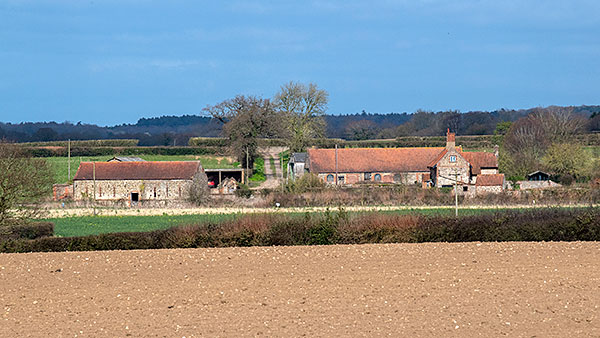 |
Green Farm - 21st March 2020 |
A map of 1728 lists Green Farm with its original name of Manor Farm. |
A developed farmyard is shown to the east of the farmhouse on the 1841 tithe map and this included the late 18th/early 19th century crop storage barn with a small lean-to cattle shed projecting from the eastern wall and further cattle shelters or cart-sheds to the west. The crop storage barn formed the northern extent of a range of earlier buildings the earliest of which was an early 18th century threshing barn. |
House, C17. Flint and brick, pantile roof. Long single range of 5 bays, 5th bay an addition. Left hand side (bays 1 and 2) lobby entrance, right hand side (bays 3 and 4) through passage. Two storeys and attic. Two axial stacks, that to right hand being between original end and additional 5th bay, that to left hand being between bays 1 and 2. Walls of varied construction including galletted flint in central first storey, brick to first and second bays, second storey; 5th bay of coursed flint. 2 doorways each with double leaved doors having glazed upper panels, left hand door between first and second bays, right hand door between third and fourth bays; C19 gabled porch under pantile roof to left hand door; right hand door with late C19/early C20 flat wooden canopy with brackets. Scattered fenestration, altered; 5 windows of aluminium framed 3-light casements with transoms, c1980. Left hand gable of coursed flint with 2 brick square hood moulds for blocked openings. Interior: fourth bay has roll moulded beam with run out stops. E. Rose (NAU) - 9th July 1986 |
Barn at Green Farm 20.2.52 50m north-west of Green Farm House GV II Barn, on opposite side of road to Green Farm House, C18. Coursed flint with brick dressings, corrugated tile roof. Flint plinth with chamfered brick capping. Brick pattern work of hearts in gables and over ventilation slits. 6 bays, large doorway to fourth bay. Included for group value. E. Rose (NAU) - 9th July 1986 |
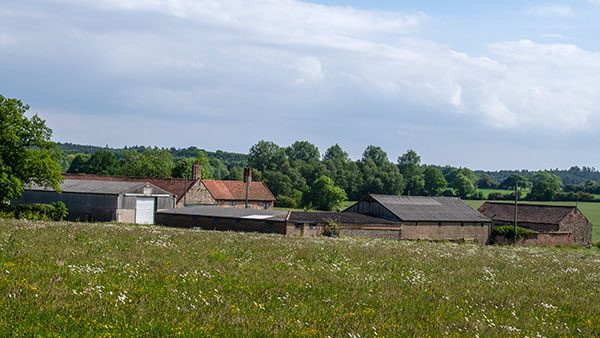 |
Green Farm - 27th May 2020 |
At the NRO (NRS 13477 28 B5) there is an abstract of title to “an Estate at Hempstead'' late belonging to Richard Gurney Esq. It was presumably prepared after the death of Richard Joseph Gurney in 1811. It is marked “No 3'' and seemingly shows title to what is now Green Farm. Presumably the abstracts numbered 1 and 2 related to the Red House Farm and the rest of the Gurneys' Hempstead Estate. Abstracts can be difficult to understand because they seemingly record no more than a series of mortgages and remortgages. They do, however repeat the recitals in earlier deeds referred to. Though the abstract may have led to confusion the history contained in it, supported by two estate maps referred to below, seems to be reasonably consistent, despite the fact that there had been three successive owners called “John Wood”. In this map the Church is well sketched showing the original chancel still in place and an appreciably taller tower (which collapsed some time between 1728 and 1743). To the south of what is now Chapel Lane the village pit (now disused) is shown as “marlpit''. Several modern public footpaths are shown as “packways''. There is no sign of any mill adjoining Court Green. The 1851 Census shows that the Gurneys had let “Court Green Farm House'' to the Reverend Arthur Langton, then fifty years of age, Rector of Matlaske and Plumstead plus his wife and children and two servants totalling eleven people in all. Hempstead, A Norfolk Village - Robin Carver, 2000 |
In 1743, John Wood, Gent of Green Farm was then almost certainly the most influential village resident. |
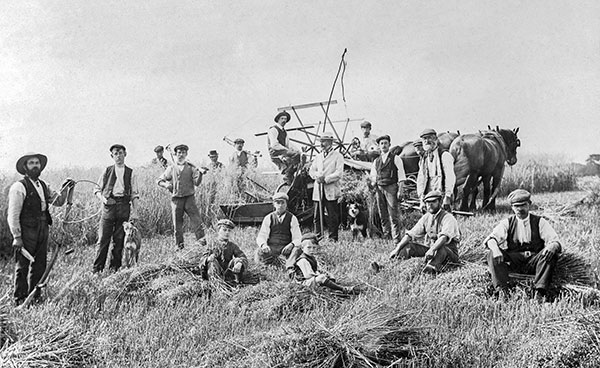 |
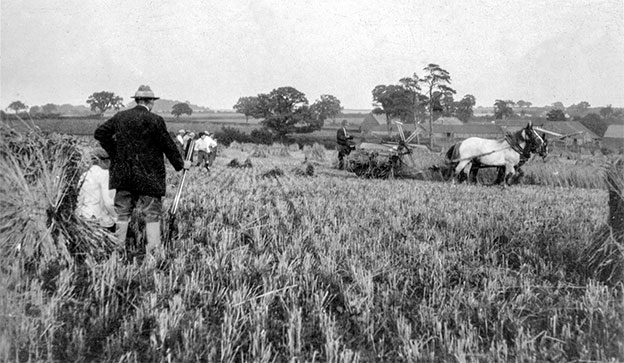 |
Harvest on Mr. D. W. Hagen's Green Farm - c.1920 Some of the men are holding scythes and others have dogs, ready for the rabbits. |
Harvest with Green Farm below - c.1920 |
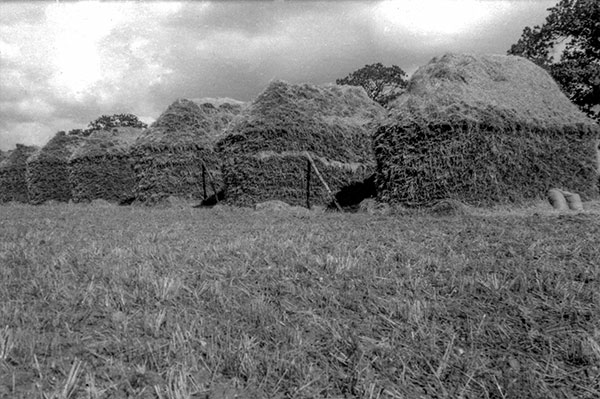 |
Straw stacks - c.1920 |
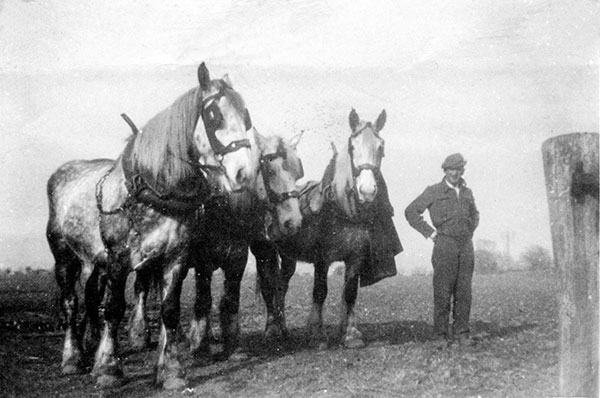 |
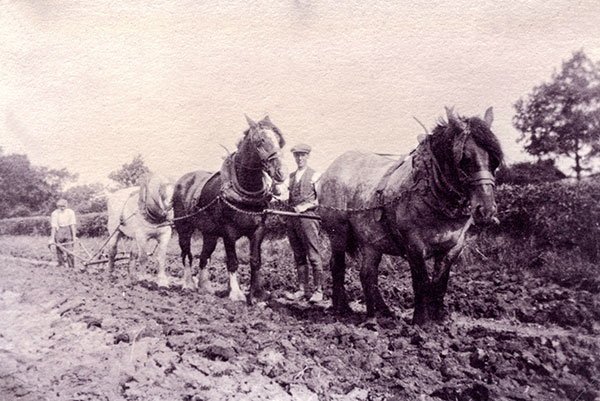 |
Sam West with Michael Knight's Percherons - c.1955 |
Ploughing at Green Farm - c.1955 |
In 1911 Mr Daniel W. Hagen became tenant of Green Farm. He was the son of Mr John Hagen of Hole_Farm and took over the tenancy on the death of Edmund Ling. Some time after the departure of the Langtons the farmhouse had been divided into three cottages. The Gurneys converted the three cottages back into a farmhouse for Mr Daniel Hagen on his taking the farm tenancy. In 1945 the farm was bought by Mr George Knight as part of the Gurney’s Hempstead Estate. He acquired vacant possession by allowing Mr D W Hagen to continue to live in the farmhouse for the rest of his life on condition that he otherwise surrendered his lease. The farm was sold in 1965 to Mr Richard Harmer who added Mill_Farm and other land to make up the farm to its present size of 340 acres, farmed by his son Mr Bertie Harmer. Hempstead, A Norfolk Village - Robin Carver, 2000 |
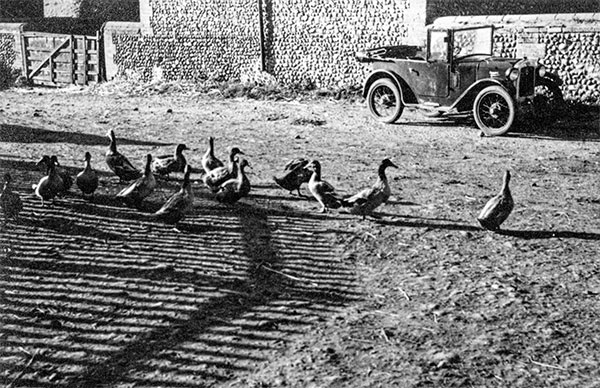 |
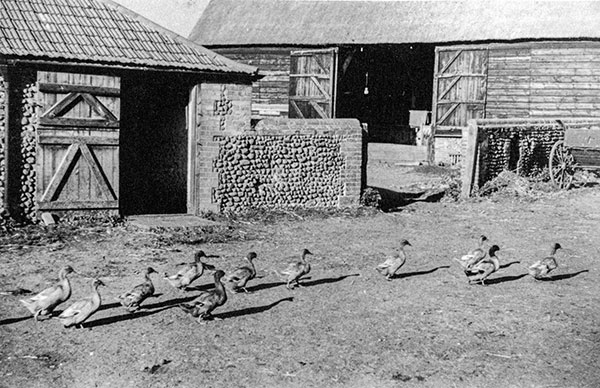 |
Green Farm yard - c.1920 |
Green Farm yard with thatched wooden barn - c.1920 |
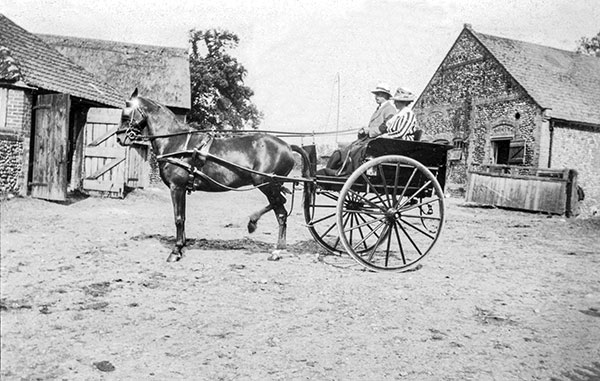 |
Green Farm outing, Daniel & Rachel Hagen - c.1920 |
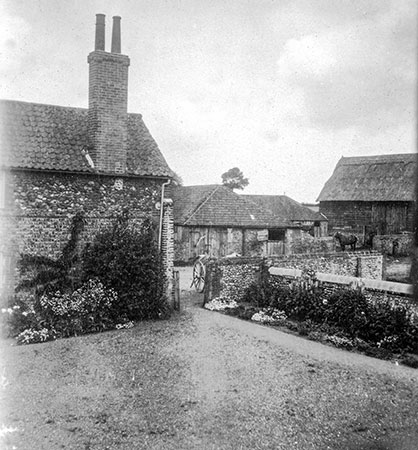 |
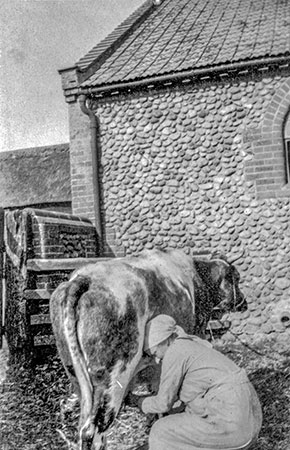 |
Green Farm yard - c.1920 |
Green Farm yard milking - c.1920 |
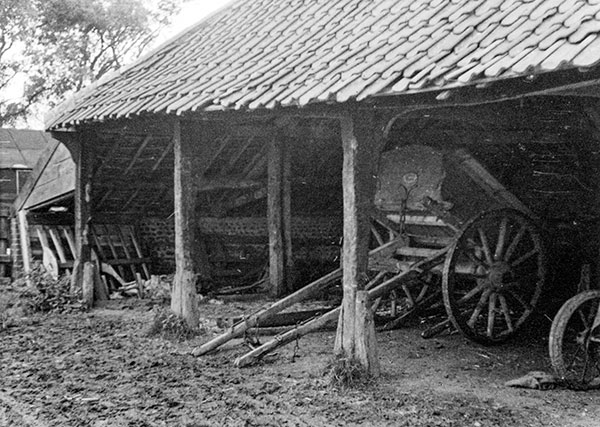 |
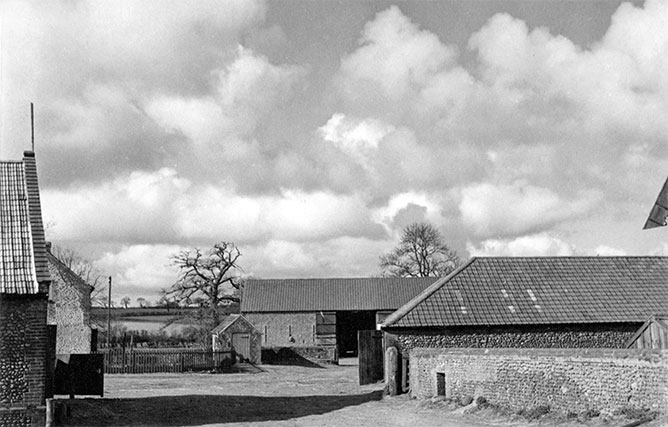 |
Green Farm cart shed - c.1920 |
Green Farm yard with barn on opposite side of the road - c.1950 |
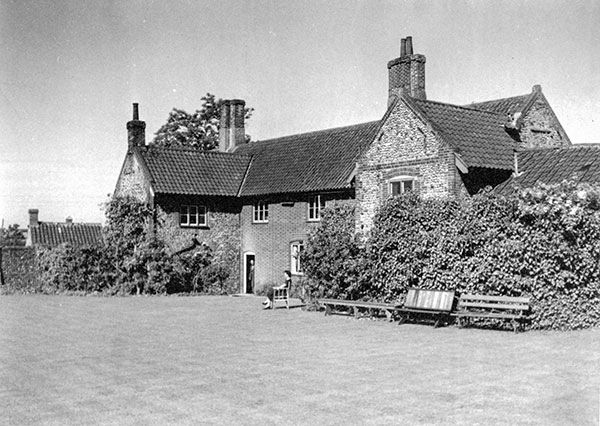 |
Green Farm house rear - c.1936 |
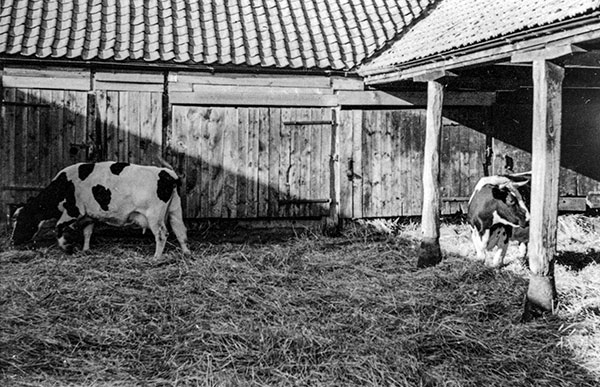 |
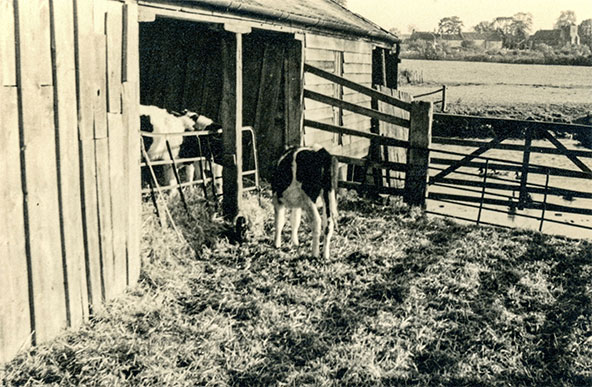 |
Green Farm - c.1953 |
Green Farm with White Horse Cottages and the church in the distance - c.1953 |
When I left school I went to work as a domestic servant for Mr and Mrs Hagen, Green farm, Hempstead, whom I felt sure were past retiring age when I joined them. But of course nobody retired during the war. It was a very busy, dairy farm with a Friesian herd and Mrs Hagen was very proud of her cows and dairy. Even there I could not escape the jam making, as Mrs Hagen was president of the, W.I., also known as Jam and Jerusalem. Mrs Hagen was also president of the district nursing association and on the county committee of the land army, sorting out billets, placements and their welfare. We had many land army girls come to the farm, and being city girls they found it very difficult to fit into farm life. I suppose it was a bit of a culture shock for them coming from homes where bathrooms and flush toilets were the norm, to just a wash bowl and outside privy. But some found that they loved the country life, and soon learned the tricks of the trade for example, when threshing corn it was wise to tie string around the bottom of their trouser legs, so as when they reached the bottom of the stack and all the rats and mice ran out, none would be able to get up their trouser legs. By the time I was old enough to register for war service, the ministry of labour had decided that due to the amount of work and extra paper work that farmers had to do. Domestic servants to farmers would be classed as a reserve occupation, so I did not get out into the wide world so to speak. But as North Norfolk had many airfields and troops passing through life was not dull. Once when I was returning to Hempstead from Holt by bicycle (the only transport available in those days) I found my way was blocked at a level crossing, by a troop train. The front of the train was in Holt station discharging troops and the rear end was a long way past the level crossing, so I thought I would be in for a long wait, but no, the soldiers on the train saw me waiting, so they lifted me and my bike into the train then lowered me out the other side. Richard C. Gray, WW2 People’s War - 1st September 2005 |
 |
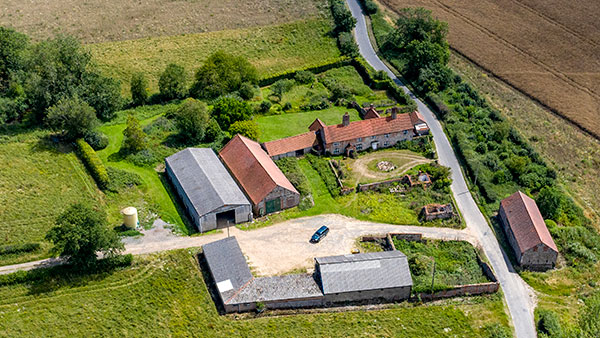 |
Green Farm - 27th May 2020 |
Green Farm - 21st July 2020 The farmhouse and the barn bottom right are Grade II listed |
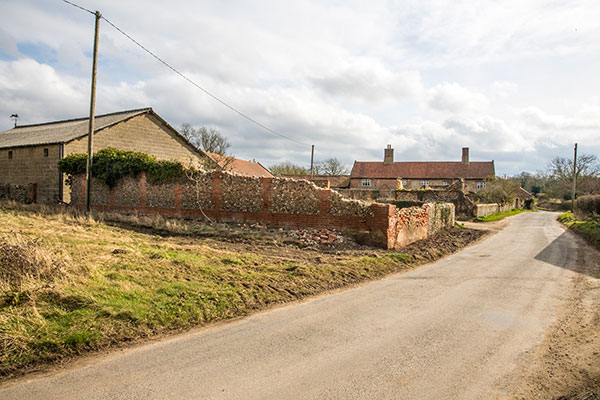 |
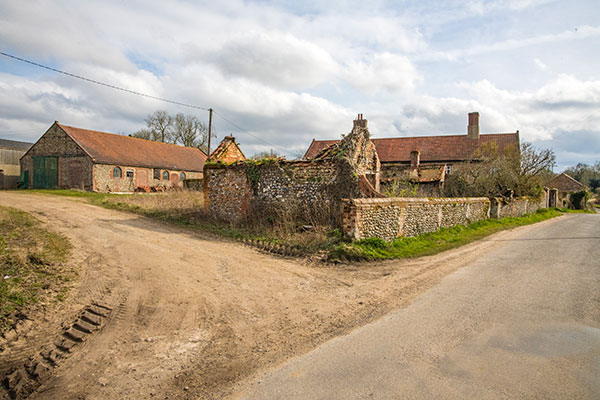 |
Green Farm - 13th May 2022 |
|
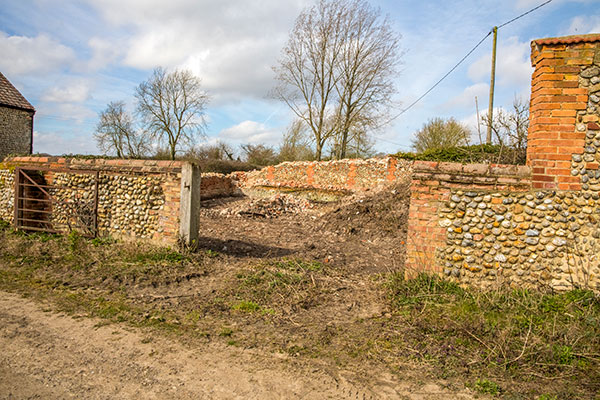 |
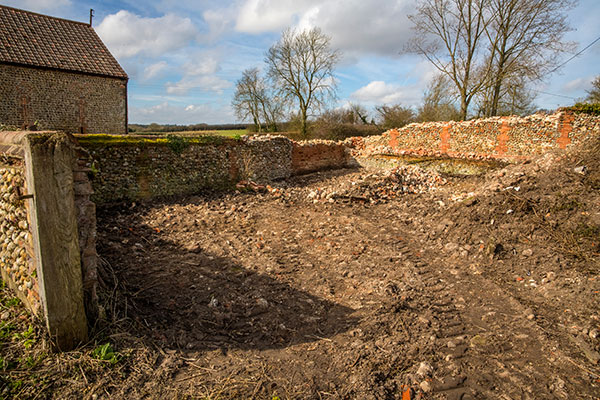 |
Green Farm outbuildings - 13th May 2022
|
|
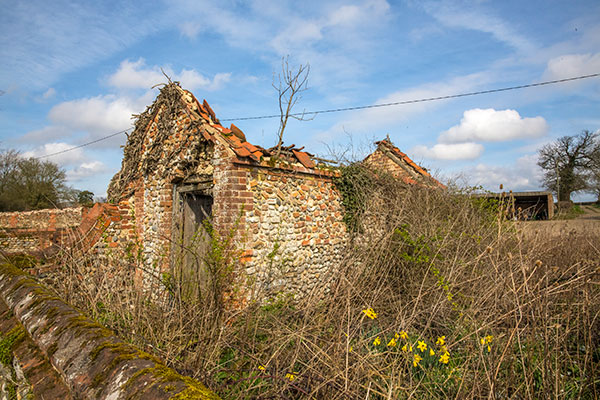 |
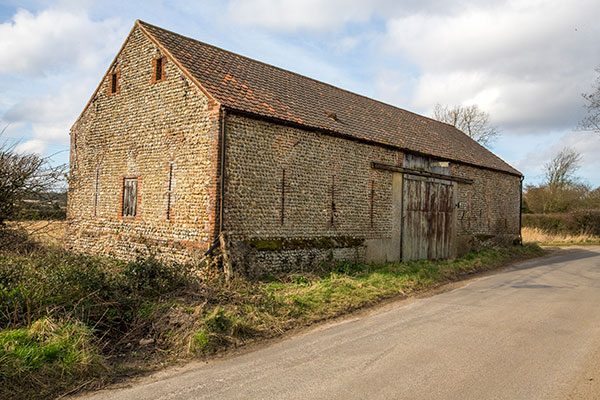 |
Green Farm outbuilding - 13th May 2022
|
Green Farm barn - 13th May 2022 |
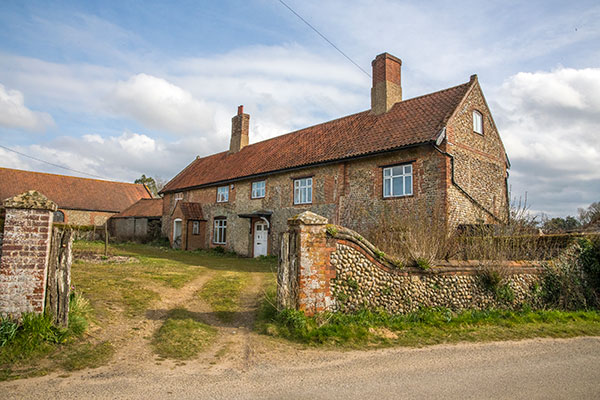 |
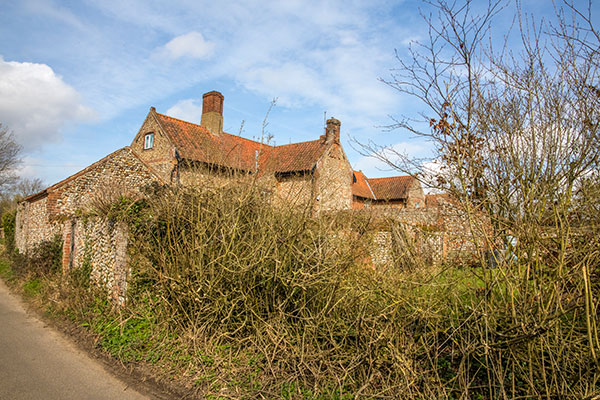 |
Green Farm house - 13th May 2022
|
|
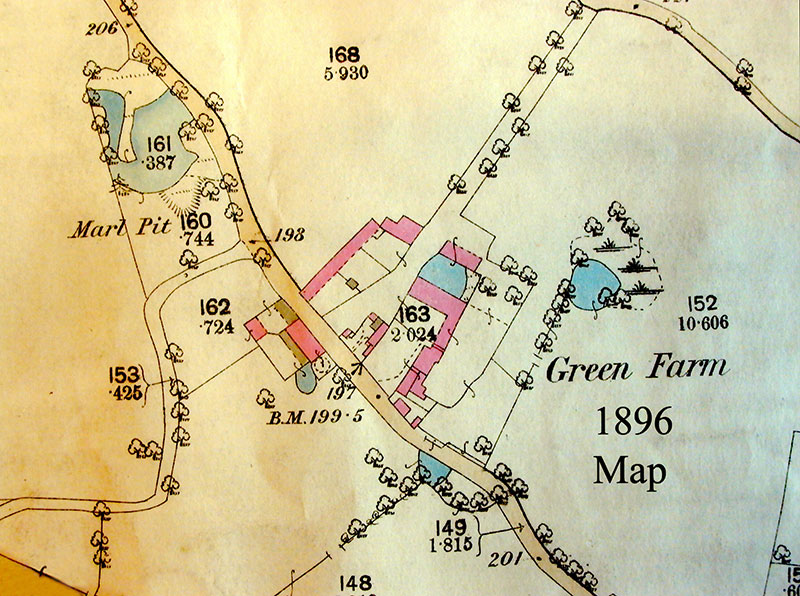 |
O. S. Map 1896 Courtesy of NLS map images |
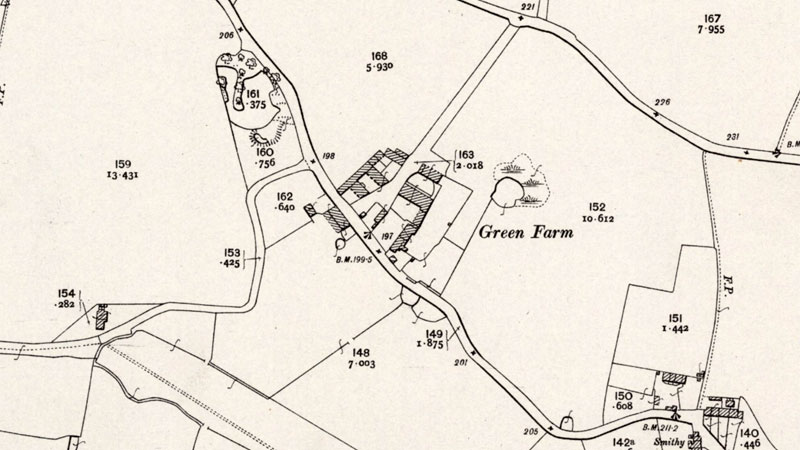 |
Additional farm buildings - O. S. Map 1905 Courtesy of NLS map images |
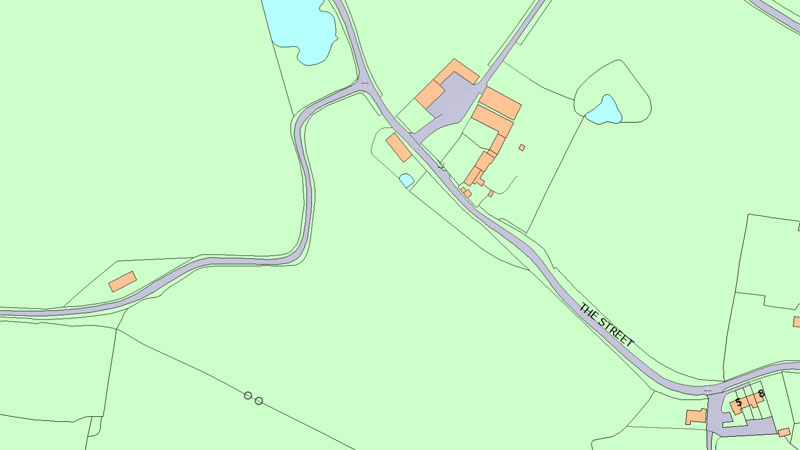 |
O. S. Map November 2023 Courtesy of Historic England map images |
| Kelly's 1937: Daniel Rodger Hagen, poultry breeder, Green farm |
If you have any memories, anecdotes or photos please let us know and we may be able to use them to update the site. Please
or telephone 07836 675369 |
Website copyright © Jonathan Neville 2023 |